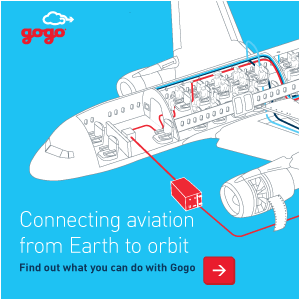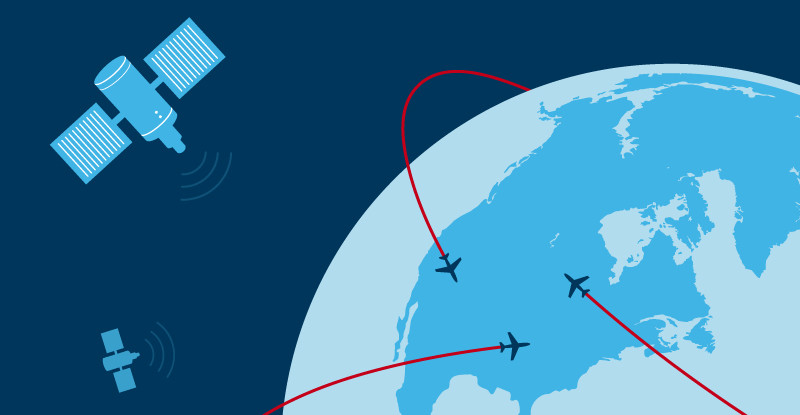Gogo has never been shy about the value proposition for its 2Ku satellite-based inflight connectivity solution. After signing a deal with Delta Air Lines to equip 250+ planes with the new broadband system starting in 2016 the company has come out more bullish than ever on 2Ku and the potential it presents for Gogo’s profitable future.
Just having a connection on a plane is not sufficient in today’s market. Customers – passengers and the airlines – have a voracious appetite for bandwidth and it shows no signs of slowing. Gogo pioneered the air-to-ground (ATG) connectivity market and thanks in part to the low per-bit rates of that service has managed to equip more than 2,100 commercial aircraft in North America. Per bit price becomes even more significant as bandwidth consumption increases and satellite-based solutions have historically had trouble competing on that front.
Gogo CEO Michael Small addressed that point directly during a recent earnings call, saying, “[O]ur marginal cost and our average cost is reasonably similar in 2Ku, our marginal cost is lower in ATG but it turns out our average cost comes out about the same.”
Norm Smagley, Gogo’s chief financial officer, expanded on that concept, noting that 2Ku – which promises speeds of up to 70 Mbps over current broad beam Ku satellites, and up to 100 Mbps when High Throughput Satellites launch – “gives us half the cost of operating versus any of our competitors, transitioning to far better coverage and lower drag for the airline and less fuel burning.”
For Ka-band providers ViaSat (regional) and Inmarsat (global, with the Global Xpress constellation expected to be activated for aero later this year) this presents a challenge. If Gogo can deliver on this expectation of low per-bit rates using Ku satellites rather than Ka then the competitive landscape will shift again in favor of the Ku connectivity camp. The geographical limitations of ViaSat’s high-capacity regional service and the delay to the Global Xpress program have already given Ku a solid boost.
 Capacity remains the biggest challenge for Gogo. The company manages that situation today by raising prices to decrease consumer demand. Revenue per session increased more that 10% year-over-year for the fourth quarter even as the take rate held flat. And Gogo expects to continue that approach to its solution until such time as it can deploy more 2Ku aircraft or get new ATG spectrum allocated and implemented.
Capacity remains the biggest challenge for Gogo. The company manages that situation today by raising prices to decrease consumer demand. Revenue per session increased more that 10% year-over-year for the fourth quarter even as the take rate held flat. And Gogo expects to continue that approach to its solution until such time as it can deploy more 2Ku aircraft or get new ATG spectrum allocated and implemented.
And so, while Gogo is aggressively keeping prices higher today in order to control demand, Small was coy about whether the eventual increase in bandwidth and commensurate drop in per bit cost will trickle down to the consumer. “[P]ricing per byte will clearly come down significantly when you bring more capacity. What happens per session or per passenger, we’ll have to see,” he said.
In short, Gogo connectivity may become faster for consumers, but there is no guarantee that it will be cheaper on Gogo-equipped aircraft. That could prove to be very beneficial for Gogo’s bottom line over time, but obviously means a hit to passenger pockets.
Gogo is gradually shifting away from being the brand which provides inflight connectivity and towards being the technology behind the scenes. Part of this is tied to the increased use of connectivity for operational services by the carriers; Delta has deployed more than 18,000 tablets, for example, and many vendors and airlines are looking at how the data pipe can be used to feed maintenance and other data back to Operations Engineers while the planes are still flying (as described in this SITA OnAir piece).
That translates into a different pricing model than simply charging per session or even per month for a consumer. As Small explained, “[I]t’s going to get a lot more sophisticated, a lot more open than simply what you described whether it’s the passenger pulling out the credit card or the airline simply paying for it.”
Related articles:








